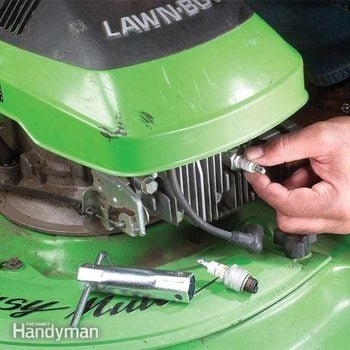Maintaining a well-manicured lawn is no easy task, but with the right tools and a little know-how, you can keep your lawn mower running smoothly all season long. In this article, you will discover an easy-to-follow DIY lawn mower maintenance guide that will save you time and money. From changing the oil to cleaning the air filter and sharpening the blades, we’ve got you covered. So grab your tools and get ready to give your trusty lawn mower the TLC it deserves. Your lawn will thank you!
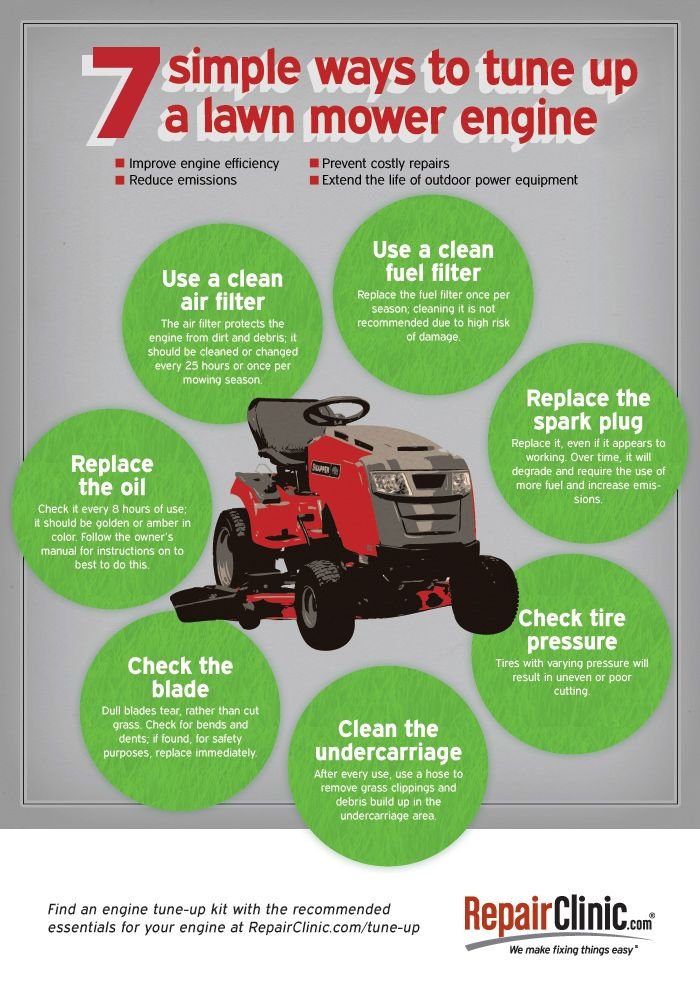
This image is property of i.pinimg.com.
Lawn Mower Maintenance Basics
Taking care of your lawn mower is essential to ensure its longevity and optimal performance. Regular maintenance not only keeps your mower running smoothly but also minimizes the risk of significant breakdowns. By following some basic preventive maintenance tasks, cleaning and storing your mower properly, and addressing any common issues that may arise, you can keep your lawn mower in top shape for years to come.
Importance of Regular Maintenance
Regular maintenance is crucial for the overall well-being of your lawn mower. It not only extends the life of your machine but also improves its performance and efficiency. Neglecting maintenance tasks can lead to costly repairs and reduce the lifespan of your mower.
By performing routine maintenance, you can identify potential problems early on and prevent more severe issues from occurring. Moreover, a well-maintained mower ensures a cleaner and more precise cut, resulting in a healthier and more attractive lawn.
Essential Tools and Equipment
Before you start maintaining your lawn mower, it’s essential to gather the necessary tools and equipment. You’ll need a socket wrench, pliers, a spark plug wrench, an air filter cleaner or replacement, a fuel filter cleaner or replacement, a drip pan or oil drain, a carburetor cleaner, a blade sharpener, and a set of safety goggles and gloves.
Having these tools readily available will make it easier to perform the maintenance tasks and ensure that you can complete the job effectively.
Preventive Maintenance Tasks
Performing preventive maintenance tasks on your lawn mower is the key to keeping it in optimal condition. These tasks include checking and cleaning the air filter, inspecting and changing the spark plug, cleaning or replacing the fuel filter, changing the engine oil, inspecting the drive belt, sharpening or replacing the blades, and adjusting the cutting height.
Checking and Cleaning the Air Filter
The air filter in your lawn mower prevents debris and dirt particles from entering the engine. Over time, the filter can become clogged, affecting the mower’s performance. To clean the air filter, remove it from the mower and tap it gently to remove loose dirt. If the filter is excessively dirty, replace it with a new one.
Inspecting and Changing the Spark Plug
The spark plug plays a crucial role in igniting the fuel mixture that powers your lawn mower’s engine. Over time, the spark plug can become fouled or worn out. Regularly inspect the spark plug and clean it using a wire brush if necessary. If the electrode is damaged or heavily corroded, replace the spark plug with a new one.
Cleaning or Replacing the Fuel Filter
The fuel filter ensures that clean fuel reaches the engine, preventing contaminants from causing damage. Over time, the filter can become clogged, reducing fuel flow and affecting the mower’s performance. Inspect the fuel filter for any signs of clogging or debris. If necessary, clean the filter or replace it with a new one.
Changing the Engine Oil
Regularly changing the engine oil is essential to maintain the smooth operation of your lawn mower. Over time, the oil can become contaminated with dirt and debris, reducing its effectiveness. To change the oil, locate the drain plug and position a drip pan or oil drain underneath. Remove the drain plug to drain the oil completely, then replace it and refill the engine with fresh oil according to the manufacturer’s specifications.
Inspecting the Drive Belt
The drive belt is responsible for transferring power from the engine to the wheels or blades of your lawn mower. Regularly inspect the drive belt for any signs of wear or damage. If the belt appears cracked or worn out, it’s important to replace it promptly to ensure proper operation.
Sharpening or Replacing the Blades
Sharp blades are essential for a clean and precise cut. Over time, the blades can become dull or damaged, affecting the quality of your lawn’s appearance. To sharpen the blades, remove them from the mower and use a blade sharpener following the manufacturer’s instructions. If the blades are severely damaged or worn out, it’s advisable to replace them with new ones.
Adjusting the Cutting Height
Having the correct cutting height is crucial for maintaining a healthy lawn. Most lawn mowers offer adjustable cutting heights to accommodate different types of grass and desired lawn heights. Make sure to adjust the cutting height according to your preferences and the current condition of your lawn.
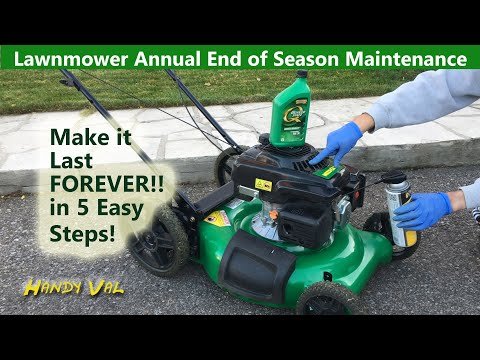
This image is property of i.ytimg.com.
Cleaning and Storage
Properly cleaning and storing your lawn mower can significantly extend its lifespan and prevent future issues. This section covers removing grass clippings and debris, cleaning the undercarriage, removing and cleaning the mower deck, and storing the lawn mower for the off-season.
Removing Grass Clippings and Debris
After each use, it’s essential to remove any grass clippings and debris that may have accumulated on your lawn mower. Using a brush or a hose, clean the top and sides of the mower to prevent grass clippings from building up and affecting its performance.
Cleaning the Undercarriage
The undercarriage of your lawn mower often collects a significant amount of grass clippings and debris. To clean it, turn the mower on its side and use a brush or a hose to remove any buildup. This will prevent clogging and ensure that the mower operates smoothly.
Removing and Cleaning the Mower Deck
The mower deck is where the blades are housed and where grass is cut. Over time, it can accumulate dirt and debris that can affect the mower’s performance. To remove and clean the mower deck, refer to your lawn mower’s manual for detailed instructions. Take care to remove any grass clippings and debris thoroughly, ensuring the deck is clean before reattaching it to the mower.
Storing the Lawn Mower for the Off-Season
If you live in an area with distinct seasons, it’s important to prepare your lawn mower for storage during the off-season. Start by draining the fuel tank or adding a fuel stabilizer to prevent fuel from becoming stale. Remove the spark plug and add a small amount of oil to the cylinder, then slowly pull the starter cord a few times to distribute the oil. Lastly, store your lawn mower in a clean and dry area, ensuring it’s protected from moisture and extreme temperatures.
Safety Considerations
When performing any maintenance tasks on your lawn mower, it’s crucial to prioritize safety. This section covers disconnecting the spark plug, using personal protective equipment, and handling fuel safely.
Disconnecting the Spark Plug
Before starting any maintenance tasks, always disconnect the spark plug to prevent accidental starting of the engine. This ensures your safety and gives you peace of mind while working on your lawn mower.
Using Personal Protective Equipment
Wearing the right personal protective equipment (PPE) is essential when maintaining your lawn mower. Safety goggles and gloves protect your eyes and hands from debris, while closed-toe shoes provide added protection. Make sure to wear appropriate PPE to minimize the risk of injury during maintenance.
Handling Fuel Safely
When working with fuel, it’s important to exercise caution. Avoid smoking or working near open flames and ensure that your lawn mower is turned off and cool before refueling. Use an approved container to store fuel and clean up any spills promptly. Proper fuel handling minimizes the risk of fire and ensures your safety.
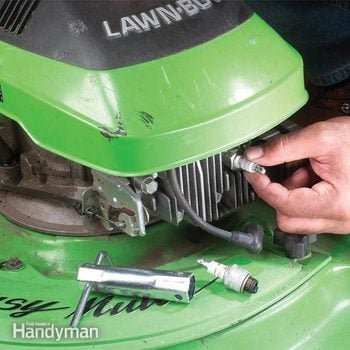
This image is property of www.familyhandyman.com.
Troubleshooting Common Issues
Even with regular maintenance, it’s possible for your lawn mower to encounter common issues. This section covers troubleshooting steps for when your lawn mower won’t start, the engine runs roughly or stalls, the grass cutting is uneven, or there is excessive vibration or noise.
Lawn Mower Won’t Start
If your lawn mower fails to start, there may be several potential causes. Start by checking the fuel level, ensuring the fuel valve is open, and checking the spark plug for fouling or damage. If the issue persists, consider cleaning or replacing the air filter or inspecting the carburetor for clogs. Following these troubleshooting steps can help identify and resolve the problem.
Engine Runs Roughly or Stalls
A lawn mower that runs roughly or stalls can be frustrating. Start by checking the fuel quality and ensuring that the fuel lines are clear from any obstructions. Inspect the spark plug for fouling or damage and clean or replace it if necessary. Additionally, cleaning or replacing the air filter and checking the carburetor for clogs can help resolve these issues.
Uneven Grass Cutting
If your lawn mower is cutting the grass unevenly, the blades may need attention. Ensure that the blades are sharp and balanced, as dull or unbalanced blades can cause uneven cutting. If the blades are in good condition, adjusting the cutting height and mowing at a slower pace may help achieve a more even cut.
Excessive Vibration or Noise
Excessive vibration or noise can indicate a problem with your lawn mower. Check the blade for damage or looseness and tighten or replace it if necessary. Inspect the engine mount for any signs of wear or damage and address any issues accordingly. If the problem persists, it’s advisable to consult a professional for further assistance.
Sharpening and Balancing Lawn Mower Blades
Keeping your lawn mower blades sharp and balanced is essential for a clean and precise cut. This section covers how to determine if the blades need sharpening, removing and inspecting the blades, sharpening them, and balancing them for optimal performance.
Determining if Blades Need Sharpening
To determine if your lawn mower blades need sharpening, visually inspect them for signs of dullness or damage. Additionally, if your mower is leaving behind uncut grass or tearing the grass rather than cutting it cleanly, it’s likely time to sharpen the blades.
Removing and Inspecting the Blades
Before removing the blades, disconnect the spark plug for safety. Carefully remove the blade assembly, taking note of the orientation and ensuring that you can reinstall it correctly. Inspect the blades for any cracks, bends, or excessive wear. If the blades are damaged beyond repair, it’s best to replace them.
Sharpening the Blades
To sharpen the blades, use a blade sharpener or a hand file. Follow the specific instructions provided by the manufacturer, ensuring that you maintain the blade’s original angle and sharpen both sides evenly. Take care to remove an equal amount of material from each cutting edge to ensure proper balance.
Balancing the Blades
Balancing the blades is crucial for preventing excessive vibration and maximizing cutting efficiency. To balance the blades, use a blade balancer or a simple nail. Hang the blade assembly on the balancer or nail, ensuring that it remains level. If one side droops, remove material from the heavier side until the blades are perfectly balanced.
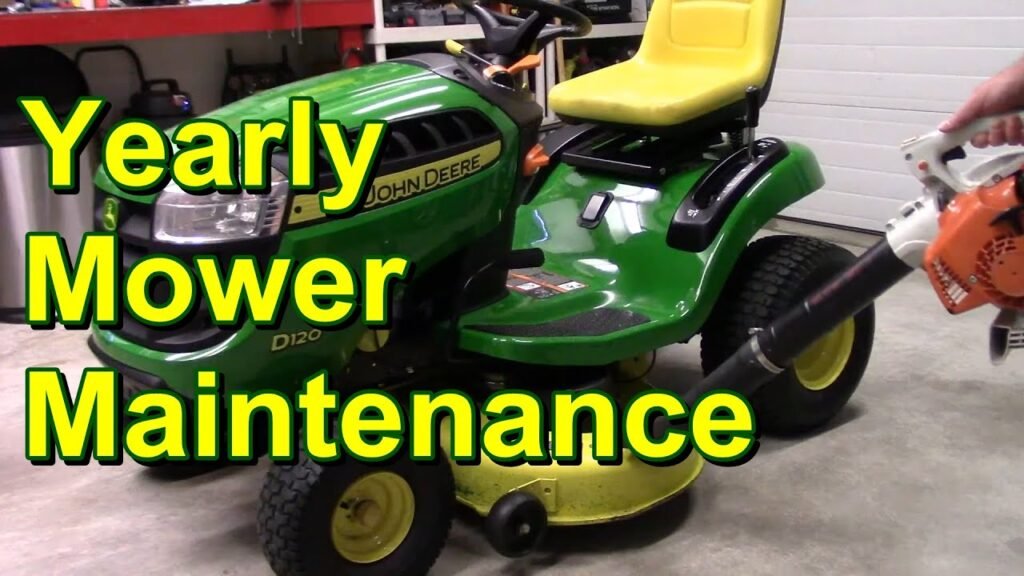
This image is property of i.ytimg.com.
Maintaining the Engine
The engine is the heart of your lawn mower, and proper maintenance is crucial for its longevity. This section covers draining and replacing the engine oil, checking and adjusting the spark plug, and cleaning or replacing the air filter.
Draining and Replacing the Engine Oil
Regularly changing the engine oil helps remove contaminants and ensures smooth operation. Locate the oil drain plug and position a drip pan or oil drain underneath. Remove the drain plug to allow the oil to drain completely, then replace the plug and refill the engine with fresh oil according to the manufacturer’s specifications.
Checking and Adjusting the Engine’s Spark Plug
A properly functioning spark plug is essential for the engine’s performance. Regularly inspect the spark plug for fouling, damage, or wear. Clean it with a wire brush if necessary, or replace it if it cannot be restored. Adjusting the spark plug gap according to the manufacturer’s specifications can help optimize engine performance.
Cleaning or Replacing the Air Filter
The air filter prevents dirt and debris from entering the engine and should be checked regularly. If the air filter appears dirty or clogged, it’s advisable to clean it using an air filter cleaner or replace it with a new one. A clean air filter ensures that the engine receives the proper airflow, improving performance and fuel efficiency.
Routinely Inspecting the Belts and Drive Systems
Regularly inspecting the belts and drive systems of your lawn mower helps maintain optimal performance. This section covers inspecting the drive belt, checking and adjusting the tension, and replacing the belt if necessary.
Inspecting the Drive Belt
Inspect the drive belt for any signs of wear, cracking, or stretching. A worn-out drive belt can cause the mower to lose power or fail to engage the blades. If the belt appears damaged or worn, it’s important to replace it promptly to ensure proper operation.
Checking and Adjusting the Tension
Proper belt tension is crucial for efficient power transfer. Excessive slack or tightness can affect the mower’s performance and increase wear on the belt. Consult your lawn mower’s manual for instructions on how to check and adjust the belt tension correctly.
Replacing the Belt
If the drive belt is significantly worn or damaged, it’s necessary to replace it with a new one. Refer to your lawn mower’s manual for guidance on the specific steps and instructions for replacing the belt. Proper installation ensures that the mower operates smoothly and efficiently.
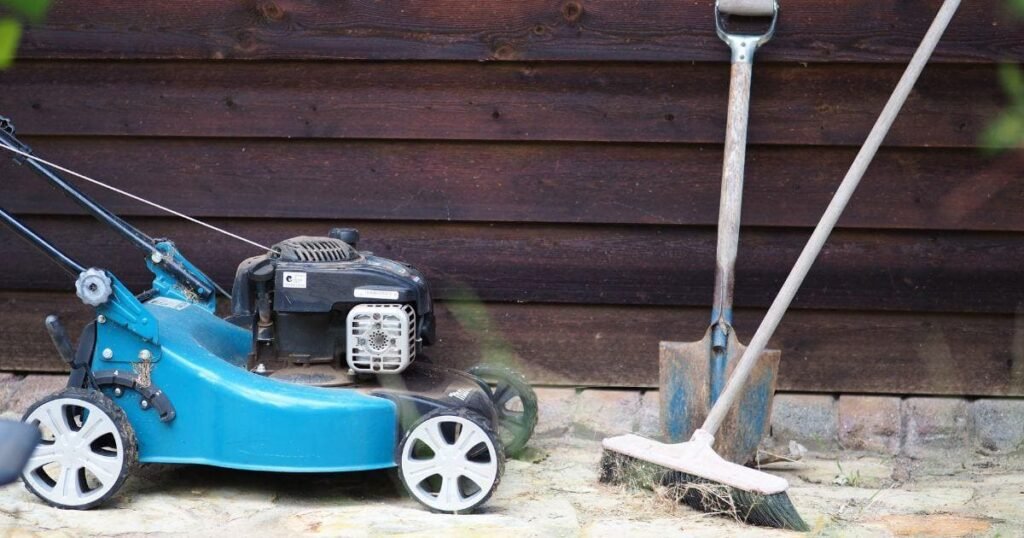
This image is property of mld23jfmco1t.i.optimole.com.
Regularly Checking and Cleaning the Fuel System
Keeping the fuel system of your lawn mower clean and properly maintained improves performance and prevents fuel-related issues. This section covers inspecting the fuel filter, cleaning or replacing the filter, and inspecting and cleaning the carburetor if necessary.
Inspecting the Fuel Filter
Inspect the fuel filter for any signs of clogging or blockage. A dirty or clogged fuel filter can restrict fuel flow and affect the mower’s performance. If the filter appears excessively dirty, it’s advisable to clean it or replace it with a new one.
Cleaning or Replacing the Filter
To clean the fuel filter, remove it from the fuel line and use an appropriate cleaner to remove any dirt or debris. Alternatively, if the filter is heavily clogged or damaged, it’s best to replace it with a new one. A clean fuel filter ensures that your lawn mower’s engine receives clean fuel, optimizing its performance.
Inspecting and Cleaning the Carburetor
If your lawn mower is experiencing issues with fuel flow or performance, it might be necessary to inspect and clean the carburetor. A clogged or dirty carburetor can cause starting problems, poor engine performance, and reduced fuel efficiency. Consult your lawn mower’s manual for detailed instructions on how to inspect and clean the carburetor properly.
Performing Seasonal Maintenance
Performing seasonal maintenance on your lawn mower helps ensure that it’s ready to tackle the demands of each season. This section covers preparing the lawn mower for winter storage and getting it ready for spring.
Preparing the Lawn Mower for Winter Storage
Before storing your lawn mower for the winter, it’s important to properly prepare it to prevent damage and ensure easy starting in the spring. Begin by cleaning the mower thoroughly, removing any grass clippings and debris. Empty the fuel tank or add a fuel stabilizer to prevent the fuel from going bad. Remove the spark plug and add a small amount of oil to protect the cylinder. Lastly, store the mower in a clean and dry area to protect it from moisture and extreme temperatures.
Getting the Lawn Mower Ready for Spring
When spring arrives, it’s time to prepare your lawn mower for the upcoming mowing season. Start by removing any covers or protective measures used during winter storage. Install a fresh spark plug and reconnect the spark plug wire. Fill the fuel tank with fresh, clean fuel and check the oil level. Inspect the mower for any signs of damage or wear and address any issues before starting it. Following these steps ensures a smooth start to your mowing season.
By following these comprehensive DIY lawn mower maintenance tips, you can keep your mower running smoothly, extend its lifespan, and maintain a healthy and attractive lawn. Regular preventive maintenance, proper cleaning and storage, adherence to safety considerations, troubleshooting common issues, and performing necessary maintenance tasks for various components ensure optimal performance and longevity of your lawn mower. Remember, a well-maintained mower not only makes your mowing tasks easier but also enhances the overall appearance of your lawn. Happy mowing!

